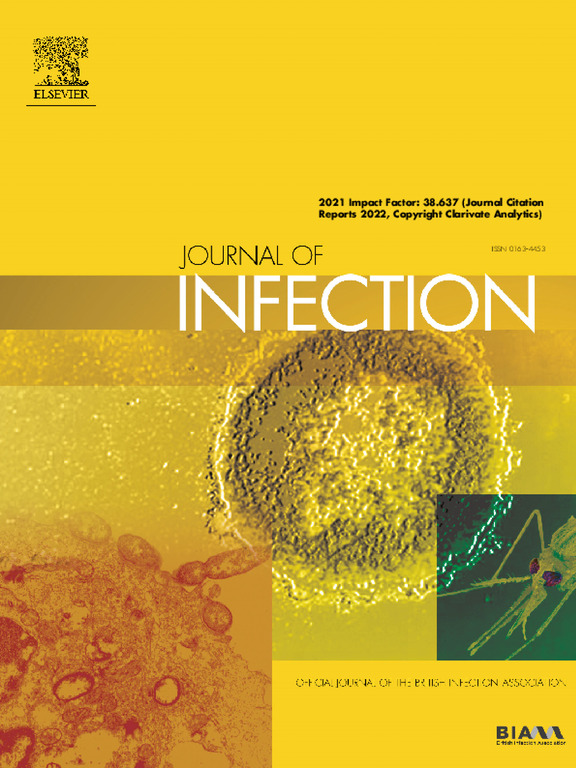Nowcasting cases and trends during the measles 2023/24 outbreak in England
IF 11.9
1区 医学
Q1 INFECTIOUS DISEASES
引用次数: 0
Abstract
Objectives
In 2023/24, England had its largest measles outbreak in a decade. Lags from symptom onset to test results made laboratory-confirmed case data inherently retrospective rather than real-time. Reporting lags varied by measles prevalence and testing purpose. Nowcasting models can predict future backfilling of reported cases and estimate recent trends.
Methods
We developed a generalised additive model accounting for reporting delays, location, and day-of-week effects in line-list data by symptom onset date. The model was re-fit weekly providing real-time nowcasts and directional trends for national and regional users. Retrospectively, we tested alternative specifications to optimise structure and confirm predictive performance, evaluating with log weighted interval score (WIS) and ranked probability score (RPS).
Results
For national case estimates, the operational and retrospective models outperformed the baseline model, reducing daily log WIS by 42% and 41%, respectively. For four-week trends, the operational and retrospective models provided better national estimates than the baseline, reducing RPS by 69% and 6%, respectively. An alternative model indexed by report date sometimes outperformed others for trend direction but lagged trend changes.
Conclusions
Our work highlights the value of real-time nowcasting during outbreaks to inform fast-evolving trends, and early access to accurate reporting delay data for effective modelling.
2023/24年英格兰麻疹暴发期间的临近预报病例和趋势。
2023/24年,英格兰爆发了十年来最大的麻疹疫情。从症状出现到检测结果的滞后使得实验室确诊病例数据本质上是回顾性的,而不是实时的。报告滞后程度因麻疹流行程度和检测目的而异。临近预报模型可以预测报告病例的未来回填,并估计最近的趋势。方法:我们开发了一种广义的加性模型,根据症状发作日期来解释行表数据中的报告延迟、地点和星期影响。该模型每周重新拟合,为国家和地区用户提供实时预报和定向趋势。回顾性地,我们测试了可选规格以优化结构并确认预测性能,并使用对数加权间隔评分(WIS)和排名概率评分(RPS)进行评估。结果:对于国家病例估计,操作模型和回顾性模型优于基线模型,将每日日志WIS分别降低42%和41%。对于四周趋势,操作模型和回顾性模型提供了比基线更好的国家估计,分别将RPS降低了69%和6%。以报告日期为索引的替代模型有时在趋势方向上优于其他模型,但滞后于趋势变化。结论:我们的工作突出了疫情期间实时临近预报的价值,它可以为快速演变的趋势提供信息,并且可以及早获得准确的报告延迟数据,从而进行有效的建模。总结:2023/24年期间,英格兰经历了十年来最大的麻疹疫情。有效的疫情管理需要实时了解病例数和趋势。然而,由于出现症状和获得检测结果之间的时间间隔,麻疹病例数据存在不可避免的报告延迟,因此很难解释最近不完整的数据。为了解决这个问题,我们开发了一个临近预测模型,以纠正未来的回填,使用一个广义相加模型来估计最近的病例数和趋势方向,在疫情期间每周进行一次。疫情爆发后,我们使用适当的评分规则,根据基线模型和在整个疫情期间优化的备选回顾性模型,回顾性地评估了运营模型的性能。在病例数和方向趋势的国家估计方面,操作和回顾性模型优于基线模型。我们的研究结果表明,临近预报可以增强对流行病的实时监测,从而支持更快、更明智的疫情应对。
本文章由计算机程序翻译,如有差异,请以英文原文为准。
求助全文
约1分钟内获得全文
求助全文
来源期刊

Journal of Infection
医学-传染病学
CiteScore
45.90
自引率
3.20%
发文量
475
审稿时长
16 days
期刊介绍:
The Journal of Infection publishes original papers on all aspects of infection - clinical, microbiological and epidemiological. The Journal seeks to bring together knowledge from all specialties involved in infection research and clinical practice, and present the best work in the ever-changing field of infection.
Each issue brings you Editorials that describe current or controversial topics of interest, high quality Reviews to keep you in touch with the latest developments in specific fields of interest, an Epidemiology section reporting studies in the hospital and the general community, and a lively correspondence section.
 求助内容:
求助内容: 应助结果提醒方式:
应助结果提醒方式:


